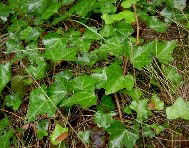Plants that filter toxins
A full analysis is available but the following highlights some of the key species used within biophilic design. These are known as hyperaccumulators and the process is phytoremediation.
Sansevieria trifasciata, Aglaonema modestum, Aloe barbadensis, Epipremnum aureum, Chrysalidocarpus lutescens, Hedera helix, Sedum acre, Sedum album, Nephrolepsis exaltata bostoniensis, Chlorophytum comosum, Dracaena marginata, Spathiphyllum wallisii.





Benefits include:
Removal of formaldehyde, benzene, air bourne toxins, nitrogen oxides, xylene, synthetic material gases, carbon monoxide, heavy metals, radioactive contaminates from air and water, toluene and trichloroethylene.
Urban and workplace Biophelia
- Volatile Organic Compounds (VOCs) emanate from a broad range of sources in industrial and general indoor air quality (IAQ) applications.
- Plant material in the urban landscape can absorb, trap and store HAPs (hazardous airborne pollutants) whilst trapping, filtering and converting carbon.
- The reduction of air pollutants urban chemicals improve living and working conditions, compliments urban ecology and provides sanctuary for wildlife and inhabitants of the built environment.
- Interior Biophilic design blends the use of vegetation material with the removal of VOCs (volatile organic compounds) found in every day cleaning products, carpets and paint and PM10s (small airborne particles, dust and pollutants). The use of plants can offset the presence of these elements and dramatically improve the workplace or home.
Benefits of Urban Biophilia
- Increased productivity, concentration, alertness
- Re oxygenation of the urban and internal environment
- Reduction of work place short term stress leading to lowering of blood pressure and stress hormones, tension, anger, anxiety, fatigue and lethargy.
- Reduces incidence of SBD (sick building disorder) and SAD (seasonal affective disorder)
- Reduced absenteeism, improved creativity, clarity of thought, wellbeing and motivation.
- Improved adaptability, alertness, attention, mood, metal restoration and cognitive function.
Environmental Benefits
- Reduction of air pollution by 60% at pavement level
- Reduction of Ozone, the major cause of smog and a reduction in air pollution
- Reduction in urban temperatures peaks and heat island affect, 3-5-degree drop is achievable with the use of vegetation including living walls, roofs, trees and urban landscaping
- Carbon sequestration and pollution traps, re oxygenation of the environment
- Management of water and reduction of storm surge pressure following high rainfall offsetting localised drainage and flood problems
- Bio-diversity enhancement

